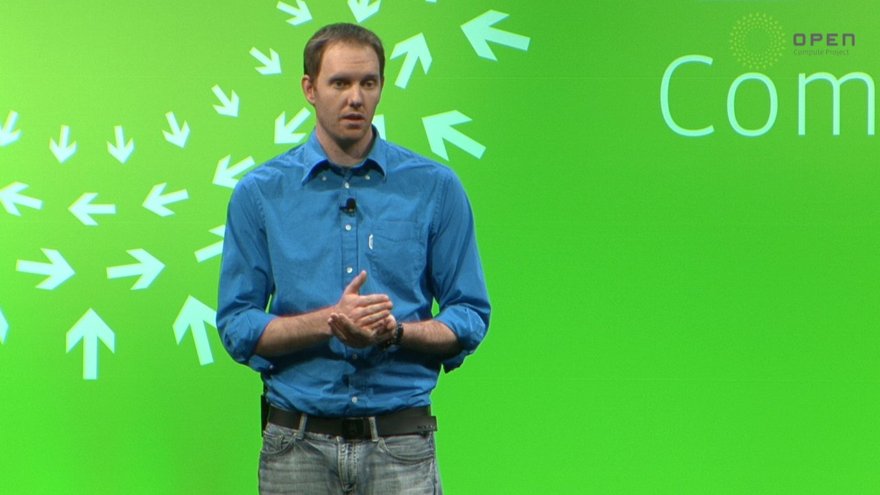The Open Compute Project (OCP) helps large corporate customers get the best deal for their money, according to Cole Crawford, its executive director.
During an opening keynote at the DCD Converged conference in London, he compared OCP to a ‘buyer’s club, an organization that pools its members' collective buying power, enabling them to make purchases at lower prices than are generally available, or to purchase goods that might be difficult to obtain independently.
Server buyer’s club
The Open Compute Project is a non-profit that began at Facebook as ‘Project Freedom’- meaning freedom from Tier I OEMs - when the company was redesigning its Prineville data center (PUE around 1.07).
After the facility was complete, Facebook decided to openly share standardized infrastructure component designs for hyperscale data centers, such as compute nodes, storage, network switches and even specialized ‘OpenU’ racks, which are slightly wider on the inside. Today, OCP includes over 175 corporate members.
During his keynote, Crawford stressed that Open Compute is not a standards body: “While we have great standards bodies, vendor-like consortiums and the like, not always do we find that it means everything is just going to work when you plug it in.”
In contrast, OCP aims to offer cheap hardware with enterprise-grade features and performance. It works more like a buyer’s club, allowing hundreds of companies to act like one large OEM and get reduced rates on components.
“Open Compute lets you get together with other folks in your industry and do massive supply chain buys,” explained Crawford.
“We are seeing corporations line up and purchase gear together. To a provider, Open Compute is a delivery mechanism and a platform for driving next generation technology into the market faster and more efficiently. And to the customer, this is open source.
“To the customer, Open Compute is a way to make sure that you’re using community-based standards that are going to change with your requirements, and not vendor-less standards that are going to change based on supply chain capabilities or features that you may or may not support.”
Right now, OCP is busy working on Redfish, a server management framework that’s meant to replace the Intelligent Platform Management Interface (IPMI). It is also experimenting with Seagate’s Ethernet-connected storage. More news about both developments are expected in March 2015 at the Open Compute Summit in San Jose, California.
“We’re very interested in alternative processing architectures – I’ve mentioned OpenPOWER and ARM, Intel obviously with Atom and Avoton,” said Crawford.
“We want to see the benefits of these types of SoCs. Imagine if you could put a thousand cellphones in a rack, have that for your infrastructure, generating very low amount of heat. Obviously not giving you as much power as you get out of the latest Haswell, but for certain workloads, we don’t think that’s going to be an issue.”

